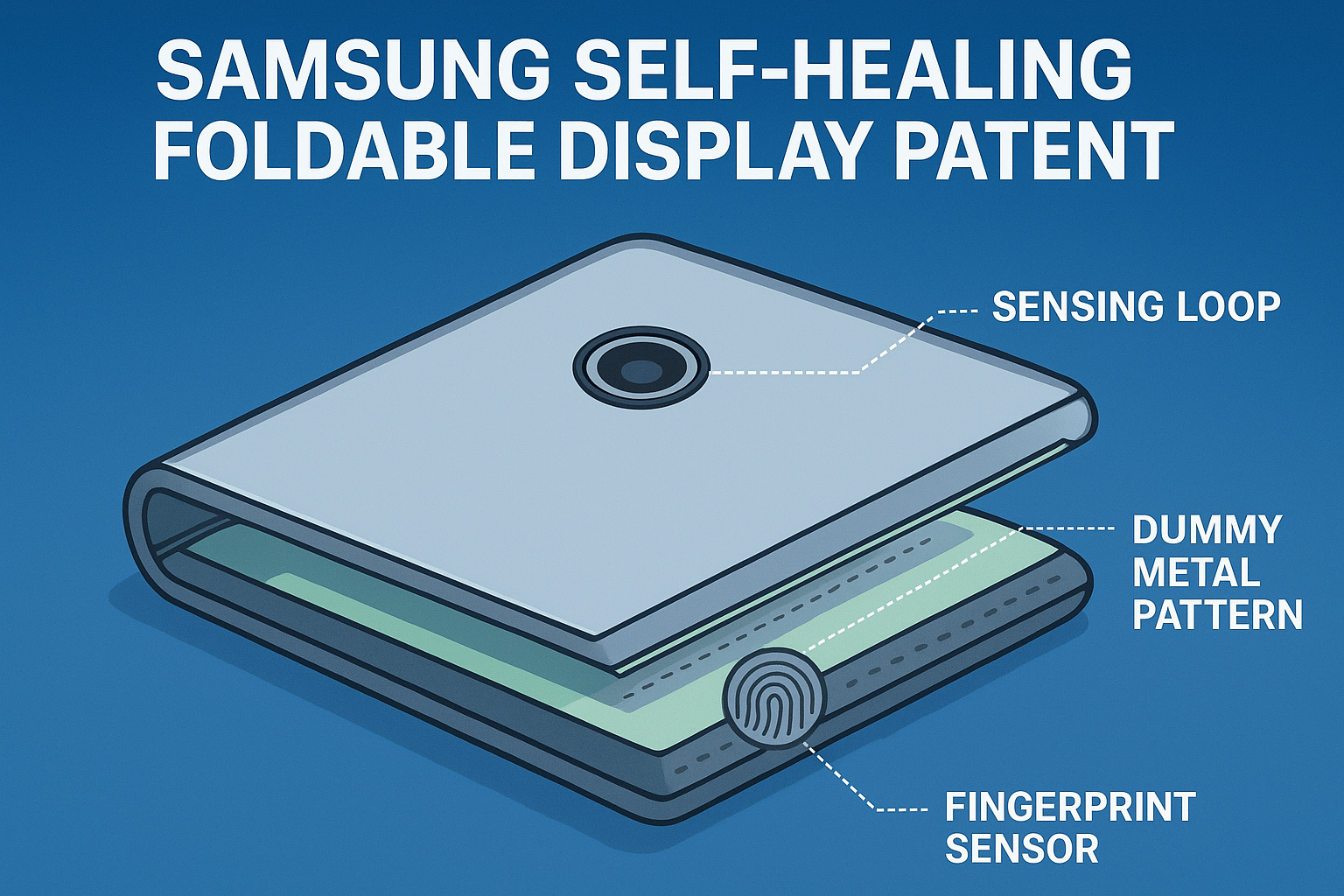Samsung continues to push the boundaries of smartphone innovation. The company has filed a new patent that describes a self-healing foldable display designed to protect delicate areas such as the camera, fingerprint sensor, and internal screen layers.
A Smarter Way to Protect Foldable Screens
According to the patent report, Samsung’s design uses a smart sensing structure that can detect and respond to damage on the display. Two ultra-thin wires are placed in separate layers around cutouts for sensors and cameras. These wires work together to sense cracks or damage forming near these critical regions.
When a microcrack is detected, the system can trigger dummy metal patterns to strengthen the weak spot and stop the crack from spreading. This process acts like a built-in repair mechanism that prevents long-term damage to the screen.
Defense Against Moisture and Wear
Samsung’s design also adds microscopic grooves and protective sealants around the display area. These help block moisture and oxygen from entering the display layers. This extra protection could extend the lifespan of foldable phones, which often suffer from screen fatigue and air exposure after extended use.
Improving In-Display Fingerprint Sensors
The patent also highlights Samsung’s efforts to make in-display fingerprint sensors more reliable in foldable devices. Current foldable screens are thinner and more flexible, which makes it difficult to embed fingerprint modules without risking cracks or distortion. The new design aims to fix that by creating a more durable area around the sensor.
What Self-Healing Means
The “self-healing” technology in Samsung’s patent doesn’t mean the screen can completely repair itself. Instead, it focuses on early detection and containment of micro-damage. By reinforcing weak points in real time, the display can maintain its performance and prevent bigger failures.
Future of Foldable Durability
Samsung’s innovation comes at a time when durability remains a major concern for foldable phone users. If implemented, this technology could significantly improve screen longevity and reduce repair costs.
While the patent does not confirm when Samsung will use this feature, it shows the company’s strong focus on advancing foldable technology. The design could appear in future models of the Galaxy Z Fold or Z Flip series.
Samsung has not made an official statement about the patent yet. However, the concept reinforces the brand’s leadership in flexible display research and its goal to make foldable devices tougher and smarter.

